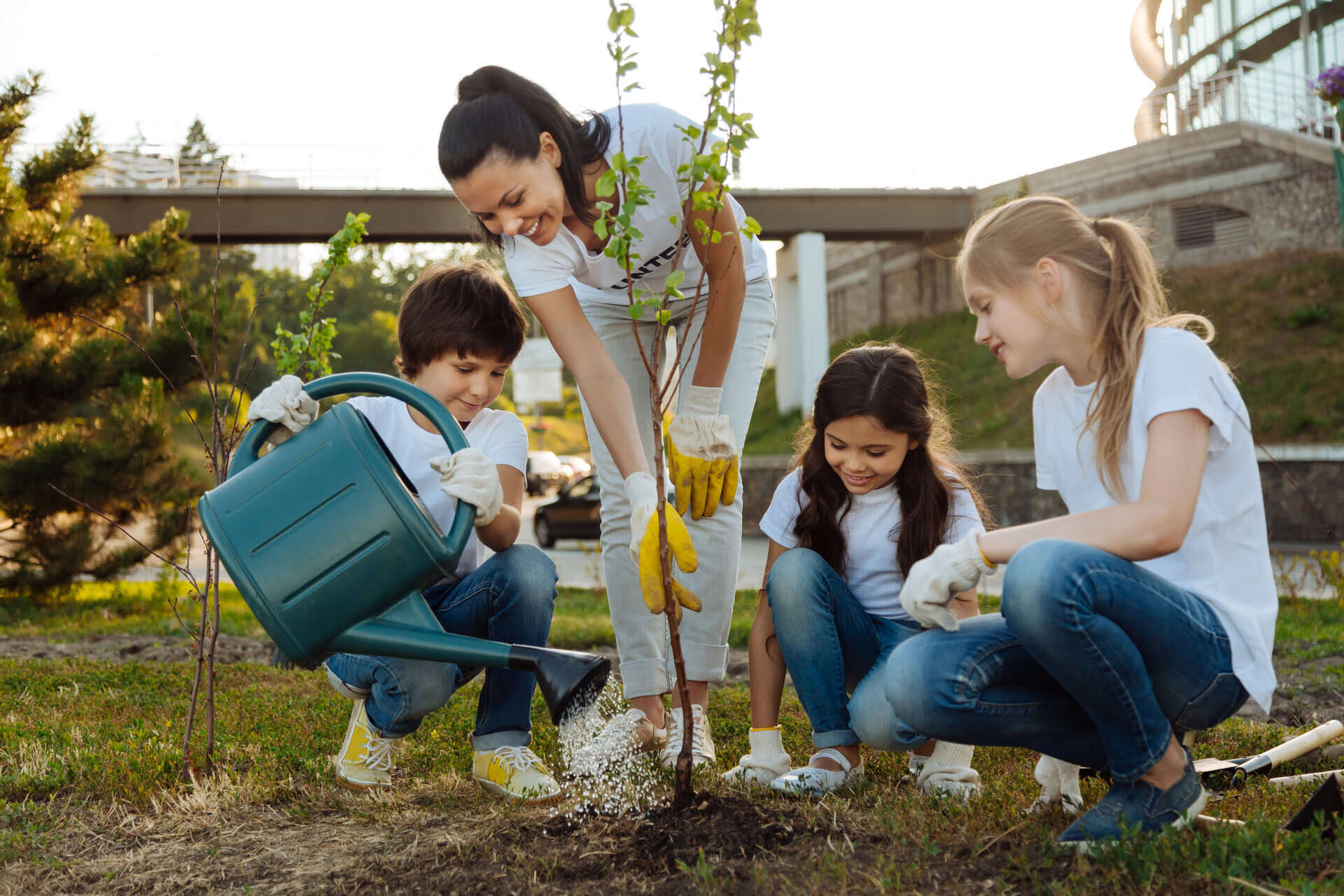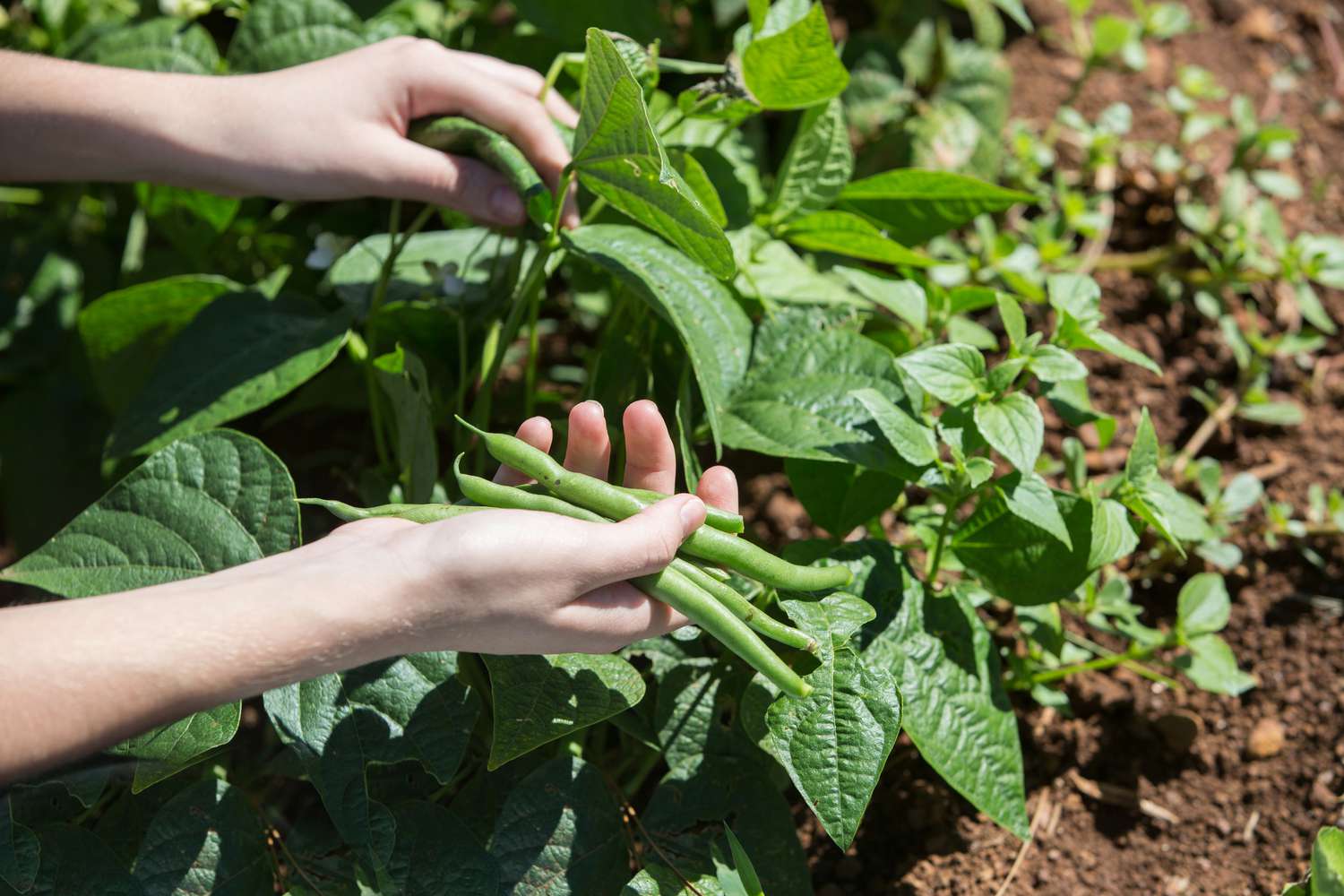Home>Garden Essentials>How To Protect Green Space


Garden Essentials
How To Protect Green Space
Modified: March 7, 2024
Learn how to protect and maintain your garden space with our expert tips and strategies. Safeguard your green oasis for a thriving and sustainable environment.
(Many of the links in this article redirect to a specific reviewed product. Your purchase of these products through affiliate links helps to generate commission for Storables.com, at no extra cost. Learn more)
Introduction
Welcome to the world of green spaces! In this article, we will explore the importance of green spaces and discuss strategies to protect them. Green spaces, such as parks, gardens, and natural reserves, play a vital role in our well-being and the health of the environment.
With increasing urbanization and the constant threat of development, green spaces have become more vulnerable than ever before. It is crucial for individuals, communities, and governments to recognize the value of these spaces and take action to protect and preserve them.
In the following sections, we will delve into the significance of green spaces, the threats they face, the benefits of protecting them, and ways to ensure their longevity.
So, grab your gardening gloves and let’s dive into this journey of protecting green spaces together!
Key Takeaways:
- Green spaces, like parks and gardens, are crucial for our health and the environment. Protecting them involves community engagement, advocacy, and learning from successful conservation efforts.
- Preserving green spaces benefits our physical and mental health, biodiversity, and the planet. Strategies like land use planning, community engagement, and advocacy are essential for their protection.
Read more: How To Protect A Garden From Animals
Importance of Green Space
Green spaces are not just pretty patches of land; they are essential for our well-being and the health of our planet. Here are some reasons why green spaces are of utmost importance:
- Improved Mental and Physical Health: Spending time in green spaces has been linked to numerous health benefits. It reduces stress, improves mood, and promotes overall well-being. Research has shown that access to green spaces can decrease the risk of cardiovascular diseases, obesity, and mental health disorders.
- Enhanced Biodiversity: Green spaces provide habitats for a multitude of plants, animals, bird species, and insects. These ecosystems support biodiversity and contribute to the delicate balance of nature. Preserving green spaces is crucial for the survival of many species and the overall health of our planet.
- Air and Water Quality Improvement: Green spaces act as natural filters, purifying the air we breathe and the water that flows through them. Trees and plants absorb pollutants, reduce air temperature, and release oxygen, improving the quality of the surrounding environment.
- Climate Regulation: Green spaces play a significant role in mitigating climate change. Through the process of photosynthesis, plants absorb carbon dioxide, a major greenhouse gas, and release oxygen. They also provide shade, reducing the urban heat island effect and lowering energy consumption.
- Social and Community Benefits: Green spaces serve as gathering places for communities, promoting social interaction and cohesion. They provide opportunities for recreational activities, exercise, and cultural events. Green spaces also contribute to the aesthetic appeal and identity of a place, attracting visitors and boosting the local economy.
It is clear that green spaces are not just luxuries we can afford to lose. They are valuable assets that contribute immensely to our health, environment, and quality of life. Protecting and preserving these spaces should be a shared responsibility.
Threats to Green Space
Despite their importance, green spaces around the world are under constant threat. Here are some of the major challenges that these spaces face:
- Urbanization and Infrastructure Development: Rapid urbanization often leads to the conversion of green spaces into concrete jungles. Land is cleared to make way for housing, roads, commercial buildings, and other infrastructure projects. This encroachment on green spaces reduces their size and availability.
- Land Mismanagement: Improper land management practices can have detrimental effects on green spaces. Activities such as deforestation, overgrazing, and improper waste disposal can degrade the quality of the soil, water, and vegetation in these areas. This degradation can impact the biodiversity and overall health of the ecosystem.
- Fragmentation and Isolation: Green spaces often become fragmented, with patches of land disconnected from each other. This fragmentation can lead to isolation of species, reducing their ability to migrate, find food, and establish viable populations. Fragmentation also limits the ecological connectivity of green spaces.
- Invasive Species: Invasive species pose a significant threat to the health of green spaces. These species, often introduced through human activities, can outcompete native plants and animals, disrupt the natural balance, and degrade the overall biodiversity of the area.
- Climate Change: Climate change poses a significant threat to green spaces. Rising temperatures, changing precipitation patterns, and more frequent extreme weather events can lead to the loss of habitats, alteration of plant and animal distributions, and increased vulnerability to diseases and pests.
These threats, if left unaddressed, can have irreversible impacts on green spaces and the ecosystems they support. It is crucial for individuals, communities, and governments to take active measures to protect and preserve these spaces for current and future generations.
Benefits of Protecting Green Space
Protecting green spaces is not just an environmental endeavor; it offers a wide range of benefits to individuals, communities, and the planet as a whole. Here are some of the key benefits of preserving and safeguarding green spaces:
- Improved Physical and Mental Health: Access to green spaces promotes physical activity, reducing the risk of chronic diseases such as obesity, diabetes, and heart diseases. Spending time in nature also has positive effects on mental health, reducing stress, anxiety, and depression.
- Biodiversity Preservation: Green spaces provide habitats for a diverse range of plant and animal species. By protecting these areas, we safeguard the biodiversity, enabling the natural ecosystems to thrive. Preserving biodiversity is essential for maintaining the balance of nature and supporting ecological resilience.
- Carbon Sequestration and Climate Regulation: Green spaces, especially forests, play a crucial role in carbon sequestration. Trees absorb carbon dioxide, helping mitigate climate change by reducing greenhouse gas concentrations in the atmosphere. These spaces also regulate microclimates, reducing the urban heat island effect and conserving energy.
- Water and Air Quality Improvement: Green spaces act as natural filters, purifying air and water resources. Plants absorb pollutants and release oxygen, enhancing air quality. They also prevent soil erosion, filter water runoff, and recharge groundwater, improving water quality and availability.
- Social and Community Well-being: Green spaces serve as gathering places for communities, fostering social interaction, and promoting a sense of belonging. They provide opportunities for recreational activities, cultural events, and educational programs. Preserving these spaces enhances the quality of life and strengthens community bonds.
- Economic Benefits: Green spaces can have a positive impact on the economy. Parks, nature reserves, and gardens attract tourists and visitors, boosting local businesses and generating revenue. Green spaces also enhance property values and contribute to a more attractive and desirable living environment.
By protecting green spaces, we ensure a sustainable future for ourselves and the generations to come. These spaces provide numerous benefits that are invaluable to our health, well-being, and the conservation of our planet’s natural resources.
Strategies to Protect Green Space
Preserving and protecting green spaces requires a comprehensive approach involving various stakeholders. Here are some strategies that can help in safeguarding these valuable areas:
- Land Use Planning: Implement effective land use planning and zoning regulations that prioritize the preservation of green spaces. Identify and designate areas as protected lands, parks, or nature reserves, ensuring their long-term conservation.
- Collaboration and Partnerships: Foster collaboration among government agencies, community organizations, environmental groups, and private entities. Encourage partnerships that promote the conservation and management of green spaces through joint efforts, resources, and expertise.
- Public Awareness and Education: Raise awareness among the general public about the value and benefits of green spaces. Promote education programs that highlight the importance of conservation and sustainable practices. Engage communities in hands-on activities and events that encourage appreciation and stewardship of green spaces.
- Sustainable Land Management: Adopt sustainable land management practices to ensure the health and longevity of green spaces. Implement measures such as responsible waste management, restoration of degraded areas, reforestation, and the use of environmentally-friendly techniques for maintenance and landscaping.
- Protected Area Management: Establish effective management plans for protected areas. This includes regular monitoring, enforcement of regulations, and the involvement of trained personnel and volunteers. Implement measures to control invasive species, protect wildlife habitats, and promote sustainable tourism.
- Green Infrastructure Development: Incorporate green infrastructure practices in urban planning and development projects. Ensure the integration of green spaces, such as parks, green roofs, and urban gardens, to provide ecosystem services, enhance biodiversity, and improve the quality of life in urban areas.
- Legislation and Policy Support: Advocate for strong legislation and policies that protect and preserve green spaces. Support initiatives that encourage the acquisition of land for conservation purposes, offer tax incentives for landowners, and promote sustainable development practices.
By implementing these strategies, we can establish a strong foundation for the protection and preservation of green spaces. It is important to remember that individual actions, coupled with collective efforts, have the power to make a significant impact in safeguarding these invaluable resources.
Get involved in local conservation efforts by joining or supporting organizations that work to protect green spaces. You can also participate in community clean-up events and advocate for policies that prioritize green space preservation.
Read more: How To Protect Outdoor Wooden Furniture
Community Engagement in Protecting Green Space
Engaging the community is crucial in the efforts to protect and preserve green spaces. By involving local residents and stakeholders, we can foster a sense of ownership and collective responsibility for these valuable areas. Here are some ways to promote community engagement in protecting green spaces:
- Community Gardens: Establish community gardens within green spaces, where individuals can come together to grow their own food and connect with nature. These gardens can serve as educational spaces and hubs for community activities, fostering a sense of unity and promoting sustainable practices.
- Volunteer Programs: Organize volunteer programs that invite community members to actively participate in the care and maintenance of green spaces. This can include activities such as tree planting, trail maintenance, invasive species removal, and garbage cleanups. Encourage community members to take ownership and pride in their local green spaces.
- Education and Workshops: Conduct educational programs and workshops to raise awareness about the importance of green spaces and conservation practices. Offer workshops on topics such as sustainable gardening, wildlife protection, and eco-friendly landscaping. Provide resources and information on how community members can make a positive impact in their own neighborhoods.
- Community Events and Festivals: Organize community events and festivals that celebrate green spaces and their significance. This can include nature walks, bird watching tours, outdoor concerts, and art exhibitions. These events not only bring the community together but also showcase the beauty and value of green spaces.
- Collaborative Decision-Making: Engage community members in decision-making processes regarding green space management and development. Seek input and feedback from local residents when formulating policies and plans for these areas. Promote transparency and inclusivity to ensure that the community’s voice is heard and respected.
- Partnerships with Local Organizations: Collaborate with local organizations, such as schools, community centers, and youth groups, to engage them in activities related to green space protection. Foster partnerships that encourage environmental education, outdoor learning programs, and initiatives that promote the next generation’s involvement in green initiatives.
- Advocacy and Grassroots Movements: Empower community members to become advocates for green spaces. Support grassroots movements that strive to protect and conserve these areas. Encourage community members to voice their concerns, attend public meetings, and engage in dialogue with local authorities to ensure that green spaces remain a priority.
By actively involving the community in the protection of green spaces, we can build a strong network of individuals who are invested in preserving these areas for future generations. Community engagement not only enhances the effectiveness of conservation efforts but also strengthens community bonds and promotes a sustainable and resilient future.
Advocacy for Green Space Protection
Advocacy plays a crucial role in raising awareness and mobilizing support for the protection of green spaces. By becoming advocates for green space protection, we can influence public opinion, engage policymakers, and drive positive change. Here are some key strategies for effective advocacy:
- Building Alliances: Form partnerships and alliances with like-minded organizations, community groups, and individuals who share the goal of green space protection. By collaborating, pooling resources, and amplifying voices, we can create a stronger and more impactful advocacy movement.
- Research and Education: Gather and disseminate accurate research and data that highlights the social, economic, and environmental value of green spaces. Educate policymakers, stakeholders, and the public about the importance of protecting these areas and the potential consequences of their loss.
- Engagement with Decision-Makers: Actively engage with local, regional, and national decision-makers to advocate for green space protection. Attend public meetings, present well-reasoned arguments, and share personal stories and experiences that highlight the significance of these areas. Foster constructive relationships with policymakers to ensure that the protection of green spaces becomes a priority on their agenda.
- Media and Communications: Utilize various media platforms, including social media, press releases, and op-eds, to raise public awareness and advocate for green space protection. Share success stories, promote community events, and highlight the benefits of green spaces to engage a wider audience. Ensure that the messaging is clear, compelling, and tailored to the target audience.
- Public Participation: Encourage and facilitate public participation in decision-making processes related to green space protection. Mobilize community members to attend public hearings, sign petitions, and submit comments to express their support for preserving these areas. A strong and unified public voice can have a significant impact on the decision-making process.
- Support Legal Means: Support legal means for green space protection, such as advocating for the creation or enhancement of laws and regulations that safeguard these areas. Collaborate with environmental attorneys, organizations, and policymakers to ensure the implementation and enforcement of protective measures.
- Empowering Local Communities: Empower local communities to become advocates for green space protection. Educate and support community members in their efforts to engage with decision-makers, organize events, and raise awareness within their neighborhoods. Help them build their capacity to advocate effectively for the preservation of green spaces.
By engaging in advocacy for green space protection, we can influence policies, inspire action, and create a movement that emphasizes the significance of these areas. Through strategic advocacy efforts, we can ensure the preservation and conservation of green spaces for the benefit of both current and future generations.
Case Studies of Successful Green Space Protection
Throughout the world, there have been inspiring examples of successful green space protection efforts that have resulted in the preservation and conservation of valuable natural areas. Here are a few case studies that demonstrate the power of community action and strategic planning:
- Central Park, New York City, USA: Central Park, one of the most iconic urban green spaces in the world, was designed by Frederick Law Olmsted and Calvert Vaux in the mid-19th century. The park was created in response to the increasing urbanization of New York City. Today, it serves as a haven for both residents and visitors, offering recreational opportunities, wildlife habitats, and a respite from the concrete jungle. Central Park’s protection and preservation are owed to the dedication of community groups, advocacy organizations, and government agencies working together to ensure its continued existence.
- Singapore’s Urban Green Spaces: Singapore is recognized as a global leader in urban green space planning. Despite its limited land area, Singapore has successfully integrated green spaces into its urban fabric. Initiatives such as the Garden City program, which started in the 1960s, have transformed the city-state into a lush green environment with numerous parks, gardens, and nature reserves. Singapore’s success can be attributed to long-term planning, strong government support, and the involvement of community organizations and residents in shaping the city’s green spaces.
- Gola Rainforest National Park, Sierra Leone: The Gola Rainforest National Park in Sierra Leone is a prime example of successful collaboration between local communities, international organizations, and the government. This park spans over 700 square miles and is a critical habitat for endangered species. Through initiatives focused on sustainable livelihoods, community empowerment, and conservation education, local communities have become actively involved in the protection of the rainforest. This collaboration has led to the reduction of illegal logging, poaching, and encroachment, ensuring the long-term survival of the rainforest and the well-being of the communities that depend on it.
- Cotswolds Area of Outstanding Natural Beauty, England: The Cotswolds Area of Outstanding Natural Beauty (AONB) is an enchanting countryside region in England, recognized for its scenic landscapes and historic villages. Through the efforts of local communities, conservation groups, and government agencies, the Cotswolds AONB has been protected from overdevelopment and urban sprawl. Strong land use planning, conservation easements, and supportive policies have preserved the distinctive character of the area and its unique ecological and cultural heritage.
- Kakadu National Park, Australia: Kakadu National Park, located in the Northern Territory of Australia, is a UNESCO World Heritage Site renowned for its natural and cultural significance. The park is jointly managed by the traditional Aboriginal landowners and the Australian government. The successful protection of Kakadu National Park is attributed to the partnership between the Aboriginal communities, who have lived on and cared for the land for thousands of years, and the government agencies responsible for conserving the park. This collaboration ensures the sustainable management of the park’s natural and cultural resources.
These case studies demonstrate that with community engagement, strategic planning, and collaborative efforts, green spaces can be effectively protected and preserved. They serve as inspiration for future conservation initiatives and highlight the importance of collective action in safeguarding our natural heritage.
Conclusion
Green spaces are an integral part of our lives, providing numerous benefits to our physical and mental well-being, as well as to the health of our environment. However, these precious areas face constant threats due to urbanization, land mismanagement, and climate change. It is essential for us to recognize the importance of green spaces and take action to protect and preserve them for future generations.
Throughout this article, we have explored the significance of green spaces, the challenges they face, and the strategies to ensure their longevity. We have discovered that protecting green spaces is not just an environmental responsibility, but a shared concern for individuals, communities, and governments. Engaging the community, advocating for green space protection, and learning from successful case studies all play vital roles in this endeavor.
By actively engaging communities in the protection of green spaces, we foster a sense of ownership and responsibility. Community gardens, volunteer programs, education initiatives, and collaborative decision-making empower individuals to become stewards of these valuable areas. Advocacy efforts further amplify the importance of green space protection and drive positive change at local, regional, and national levels.
Successful case studies from Central Park to Kakadu National Park demonstrate that with dedication, collaboration, and long-term planning, we can safeguard green spaces and preserve their ecological, social, and cultural value. These examples inspire us to take action and continue advocating for the protection of green spaces in our own communities.
In conclusion, protecting green spaces is not just a matter of aesthetics; it is a matter of our well-being, biodiversity conservation, and a sustainable future. By valuing and actively safeguarding green spaces, we not only enhance our own quality of life but also ensure a healthier and more resilient planet for generations to come.
Frequently Asked Questions about How To Protect Green Space
Was this page helpful?
At Storables.com, we guarantee accurate and reliable information. Our content, validated by Expert Board Contributors, is crafted following stringent Editorial Policies. We're committed to providing you with well-researched, expert-backed insights for all your informational needs.















0 thoughts on “How To Protect Green Space”